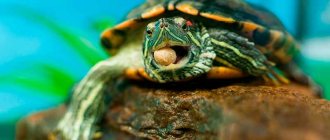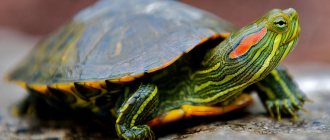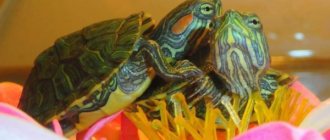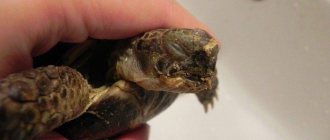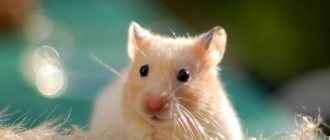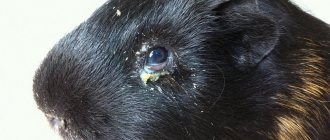- Reptiles
For their slowness and sluggishness, as well as an interested turn of the head and an inspiring look, cute animal turtles can be called royal. They are unpretentious and require a little free space to place an aquarium/terrarium.
At the same time, rest assured that you will spend more than one evening looking at the rich drawings with various shades of green. How do children love turtles?! Watching the behavior and grace of these little creatures is a pleasure. Naturally, in a pet store you examine the pet you are purchasing and fix your gaze on a healthier individual. It often happens that in a store with an animal, everything seems to be fine at first glance, but when you move a new friend to an unusual habitat, the question arises about the behavior of the reptile - why does the turtle squeak? The root cause may be the move itself and the stress of the animal, which is reflected in this reaction. This does not mean that you should rush back to the store with a live purchase. It also does not indicate illness or debilitating illness in your new pet.
The reasons why a turtle (most often the problem concerns the red-eared slider) makes a squeak can be the following:
- The most common reason for a turtle squeaking is sexual maturity. When a reptile reaches sexual maturity and is preparing to reproduce, it squeaks to attract the attention of individuals of the opposite sex. If you only have one turtle in your apartment, it is unlikely that this is the reason for the squeaking.
- By squeaking, a turtle may be trying to convey its displeasure. Carefully study the conditions in which your pet is kept - perhaps some external factor is simply causing him discomfort.
- If your turtle squeaks, inspect it carefully. A pet can express pain by squeaking. Often it is with a squeak that the reptile notifies of injury. Examine its skin and shell.
- The most unpleasant reason why a turtle may squeak is because of illness. Many diseases of the lungs and respiratory system in general have exactly this symptom. It is not recommended to prescribe treatment on your own without special knowledge - this can only cause harm.
In any case, if your pet squeaks for more than 7 days, a visit to the veterinarian is recommended. If your animal has lived with you for a large amount of time (several months or more) and you begin to notice some sound reaction to certain of your actions, such as being pulled out of the aquarium, the pet’s lack of desire to get out onto a dry island, some changes in the skin, then you should immediately contact qualified specialists.
Pneumonia and other respiratory diseases
When talking about serious illnesses during which turtles squeak, one cannot fail to mention pneumonia.
If your turtle has pneumonia, it must be urgently treated with medication. Ulcers, saliva coming from the mouth, mucous discharge, swollen eyes and yellow plaque can help identify pneumonia in a turtle. If any of these signs are present in your turtle, take it to the vet immediately. A squeak when a turtle breathes only means that there is an obstacle in the larynx area that causes sound vibration. This may be pulmonary sputum, but most often it is saliva, food fragments or mucus from the stomach that accidentally enters the trachea. If these episodes recur, a drop of 24% aminophylline can be injected into the trachea during inhalation.
Progress of the procedure:
- Open your mouth, press on the throat from below so that the root of the tongue rises.
- There is the entrance to the laryngeal fissure.
- During inhalation, it opens (two petals diverge to the sides).
- At this moment, drop aminophylline there through a thick syringe needle, cutting off its sharp tip.
If the squeak is accompanied by other symptoms
Squeaks and opens mouth
This symptom may indicate problems with the respiratory tract. The turtle can also cough when dealing with the same problems. With her mouth open and her neck stretched out, she tries to get rid of the mucus accumulated inside and clear her throat. This may indicate the presence of acute respiratory infections of any etiology, both viral and infectious.
If the red ear opens its beak, and when it swims, it seems to fall over on its side, and if we add to this the loss of appetite and apathy, then all this will give a picture of pneumonia.
In addition to sound, dangerous diagnoses can be confirmed by the following symptoms:
- If you experience a symptom such as swollen eyes, consult a doctor immediately. swollen eyes,
- viscous saliva,
- yellow plaque or mouth ulcers,
- nasal discharge in the form of mucus.
A squeak may occur when a turtle breathes, and this means that some foreign body that can cause a similar sound has accidentally entered the trachea or larynx: saliva, phlegm from the lungs, stomach mucus or a piece of food.
Most often, this picture can be observed at night. And this sound is quite loud. You need to observe the animal for a couple of days, and if it doesn’t go away on its own, after consulting with a specialist, you can inject a drop of 24% aminophylline into the reptile’s trachea while inhaling.
This is done through a syringe, a thick needle with a sawn-off tip.
Or maybe something stuck in your mouth? With such a symptom as a turtle squeak with an open mouth, certain dysfunctions of the digestive system organs, as well as the presence of rotting processes in the oral cavity, cannot be excluded.
The diseases mentioned, especially pneumonia, are quite difficult to cure without antibiotics, which are administered to the turtle by injection. And malfunctions in the gastrointestinal tract are treated by normalizing nutrition.
Squeaks and doesn't eat
A turtle may refuse to eat and squeak as a sign of protest against improper care and maintenance. Thus, serious diseases such as pneumonia or colds develop at low temperatures and unsanitary conditions in the reptile’s home.
Refusal to eat is also observed in turtles with herpes virus infection. Such animals develop painful and bleeding ulcers in the mouth, throat and trachea, what an appetite!
Possible reasons
- ORZ or . In other words, a respiratory tract disease of both viral and infectious origin.
- Disturbances in the gastrointestinal tract.
- Processes of decay in the oral cavity.
It is very important to pay attention to such a factor as the discharge of various types of secretions from the oral cavity with the presence of a large number of air bubbles. This is necessary in order to indicate, during consultation with a specialist, the exact characteristics of the animal’s abnormal behavior in order to establish a preliminary diagnosis. In the case of an accurate description of the clinical manifestations, the veterinarian, even over the phone, can determine the exact diagnosis and give recommendations on the method of treatment
In the case of an accurate description of the clinical manifestations, the veterinarian, even over the phone, can determine the exact diagnosis and give recommendations on the method of treatment
This is necessary in order to indicate, during consultation with a specialist, the exact characteristics of the animal’s abnormal behavior in order to establish a preliminary diagnosis. In the case of an accurate description of the clinical manifestations, the veterinarian, even over the phone, can determine the exact diagnosis and give recommendations on the method of treatment.
Under no circumstances should you self-medicate, as this can lead to disastrous results. The best option is to take the animal and take it to a veterinarian who has certain knowledge and experience. The doctor will quickly and accurately determine the diagnosis of the existing disease and prescribe qualified treatment.
Such diseases, especially pneumonia, are quite difficult to cure without the use of antibiotics, which are introduced into the turtle’s body by injection.
In any case, you should pay attention to the living conditions of your pet. As a rule, most diseases, such as pneumonia or acute respiratory infections, develop in conditions where temperature conditions are low and unsanitary conditions are observed within the reptile’s habitat
Disturbances in the gastrointestinal tract are treated by normalizing nutrition.
Often the cause of various kinds of diseases in turtles is improper care and maintenance of the animal. When the first signs of any disease appear, many owners panic that the disease is serious and the pet may die.
Although in most cases the owner’s concern is justified, first of all it is worth paying attention to the symptoms and determining whether everything is really that serious or whether you can cure the turtle yourself
Before starting treatment yourself or with a veterinarian, you need to analyze whether you have properly cared for and maintained your turtle. Further treatment will depend on this.
In addition, you need to know what diseases are most common in different types of turtles.
Why does the turtle squeak
As for the reasons why animals squeak, there can be several types.
Initially, you should conduct a visual inspection of your pet. For example, for the presence of injuries or various symptoms of diseases. One of the dangerous signs may be eyes that are swollen or discharge in the form of mucus from the nasal cavity. Turtles may also squeak if they have saliva in their mouth that is sticky or has ulcers or a yellow coating. In this case, the breeder should be on alert, since the pet may have pneumonia and should definitely consult a doctor for treatment.
In any case, a visual inspection will initially be required. Perhaps the red-eared turtle squeaks because it feeds only on succulent food.
Squeaking may occur during puberty. Thus, the animal calls its partner to itself for reproduction. The sexual maturity of a pet can be determined by several indicators, namely by the size of the pet and its age. As a rule, male turtles mature at 10 years of age. True, in the conditions of a house or apartment, this process is significantly accelerated and a male’s interest in a female can arise as early as 8 years old.
In addition, do not forget about the injuries that your pet can cause to itself. It is because of them that the squeaking can be caused. Animals may squeak because they are in pain, and the sound may increase during treatment. For example, if an injection is given.
If we take into account other factors, for example, the turtle does not go to the island, refuses to eat or hibernates, then this may be caused by improper maintenance or care.
Other turtle sounds
It is believed that turtles are the most silent animals in the world and cannot make sounds. The most common “screams” heard from male land turtles are when they mount a female or what they think is a female during mating. It is believed that each species has its own voice, by which this species can be recognized. Females usually do not make any sounds when mating.
Some turtles, once in captivity, make different sounds, but then, having gotten used to them, they go numb. But in addition to screams, turtles can occasionally make various sounds that can frighten the owner or mistress.
Sometimes when closing the mouth of aquatic turtles, the tips of the horny jaws “click” against each other can be heard. If a large turtle sharply draws its head into its shell, then the air forced out of the lungs may emit a “hissing” sound, and the turtle itself may hiss if it is very frightened (and again sharply draws its head in).
Red-eared turtles may whistle when they stick their nose or muzzle out of the water. This often happens when they are unhappy with something, or just because. If there are no alarming symptoms, then such whistling is normal, and nothing can be done about it. For example, red-eared turtles make a sound similar to “croaking” for no particular reason.
But if your turtle regularly opens its mouth, stretches its neck and squeaks, start sounding the alarm and is lethargic and refuses to eat. This is likely a sign of pneumonia, which turtles do not live long with. So start looking for veterinarian herpetologists in your city.
Draw conclusions
It happens that the owners have already studied the habits of their pet turtle, and then suddenly something new in the form of a squeak. Either she squeaks at the sight of another turtle, then she seems to be sneezing, or she doesn’t want to eat. She can't tell you!
If this condition continues for several days, say, more than a week, and is accompanied by some other factors, then it’s time to sound the alarm: something is bothering the pet, and it is not necessarily external reasons. And the disease, as we know, is most easily treated at its beginning.
Other interesting articles
- How much water does a red-eared turtle need in an aquarium? This species of turtle belongs to the family of freshwater turtles. In nature they can be found in small…
- Red-eared slider who can live with it Often, owners do not think about finding special equipment because they are going to keep the red-eared slider in...
- Trionics turtle what to feed and how many times It’s quite a common thing when entering a house to meet a dog wagging its tail cheerfully or a cute kitten, don’t...
Eye diseases of red-eared turtles and their symptoms
The following symptoms may indicate eye disease in a turtle:
- Redness of the mucous membrane of the eyes.
- Swollen eyelids.
- The appearance of a white coating on the eyeballs.
- The turtle is unable to open his eyes.
- Cloudiness of the cornea.
- Slow reaction of the eyeball to current events.
Such symptoms indicate the presence of an eye disease such as conjunctivitis. It is caused by bacteria staphylococci and streptococci.
This serious illness can be caused by poor diet or unsanitary conditions. If the water in the aquarium has not been changed for a long time, then the red-eared slider’s eyes will first of all become swollen, which will indicate that the water is polluted.
Another serious turtle eye disease is panophthalmitis. This disease is caused by a purulent infection that affects the tissue of the eyeball. Evidence of such a disease can be clouding of the eyeball, and if appropriate treatment is not started immediately, the turtle may lose its vision.
Symptomatic treatment
If after 6 hours the eyes have not opened, then the pet is sick. In this case, it is necessary to wash the turtle in warm running water and place it in another container, and thoroughly disinfect the aquaterrarium and add a few drops of a diluted solution of methylene blue to it.
Eye drops will help relieve symptoms (they are instilled under the eyelid twice a day): Albucid (another name is sodium sulfacyl), Sofradex, Tobradex, Tsiprovet, Floxal, Eleovit. You can also use tetracycline ointment. If your turtle is rubbing its eyes, you will need hydrocortisone ointment. Before using eye drops, it is necessary to remove plaque by wiping the eyes with a chamomile decoction or a 3% solution of boric acid. In case of suppuration or cheesy nitrates, wash the eyes with Ringer's saline solution. After the procedure, the animal is left on dry land for 30-40 minutes.
A chamomile bath will also benefit the animal. To prepare it, pour 100 grams of chamomile flowers with 2-3 liters of boiling water. Infuse the decoction for 15-20 minutes and pour it into a container with warm water. Leave the turtle in the medicinal bath until it cools down. Then the pet is warmed up well for 6 hours under an ultraviolet lamp.
But the above methods are only used as temporary measures to help your pet open his eyes. To find out the cause of the pathology and eliminate it, you need to contact a veterinarian. In most cases, antibacterial drugs will be required, which only a specialist can select.
What to do if red-eared turtles don't grow?
If by the age of two the reptiles remain at the level of newborn turtles, the reason lies in the violation of the feeding and maintenance conditions of the cute reptiles.
Errors in care and an unbalanced diet will inevitably lead to incurable pathologies in young animals and metabolic disorders, which can cause the death of animals.
To maintain health and ensure the harmonious development of all organ systems, it is necessary to create optimal conditions for the life of young pets:
- a free aquarium with a volume of at least 150-200 liters for one individual;
- the presence of a convenient island measuring from 25*15 cm;
- the aquarium should not be completely filled so that the turtle can freely get out onto land and warm up;
- installation of a daytime and ultraviolet lamp for reptiles with a UVB power of 8% or 10% at a height of about 40 cm;
- the water temperature in the aquarium should be at least 26C, on land -28-30C;
- the soil in the aquarium should be coarse to prevent it from being swallowed;
- installation of a water purification system;
- It is regularly necessary to wash and change the water in the aquarium;
- It is necessary to feed a young turtle daily, mature individuals feed once every 3 days;
- the animal's diet should consist of sea fish with bones, shellfish and snails with shells, liver or heart, vegetables and herbs, dry food can only be used as a supplement;
- During the growth period, it is necessary to provide your pet with vitamin and calcium supplements.
With proper care, cute red-eared turtles grow sufficiently and intensively; the indicator of health in young individuals is not the growth rate, but motor activity and excellent appetite.
What does a pet need?
Red-eared turtles can live in captivity for up to 30-40 years. True, this will require proper care and high-quality living conditions. If the breeder does not provide this, then the lifespan may be significantly reduced. In order for the turtle not to squeak and live for a long time, you need to use simple recommendations:
- The room, namely the aquarium in which the pet lives, must be quite large, about 200 liters. This is due to the fact that a small turtle, like any other organism, will grow and increase in size over time. Accordingly, the animal will need more space.
- In the aquarium you will need to make an island with dry land. Although turtles are aquatic creatures, they have a need to go ashore to sunbathe and get oxygen. Otherwise they won't live very long.
- You should definitely buy and install UV lamps, and in the summer your pet can be walked in the fresh air, but exposure to open sunlight is prohibited.
- There must always be clean water in the aquarium, so the breeder needs to change it on time.
Scientists' opinion
According to researchers, adult turtles communicate with each other and with their hatchlings using at least six different types of sounds. The findings, published in the journal Herpetologica, suggest that turtles live more complex social lives than previously thought.
The study was carried out from 2009 to 2011 on the Trombetas River, located in the Brazilian state of Pará in the north of the country. Using microphones and hydrophones, scientists were able to record over 250 sounds made by river turtles. They then analyzed them into six types that correlated with specific turtle behaviors.
“The exact meaning of these sounds is unclear. However, we believe that turtles exchange information,” Dr. Camila Ferrara, who took part in the study, told the BBC. “We believe that sounds help animals coordinate their actions during egg-laying season,” Ferrara added. The sounds produced by the turtles varied slightly depending on what the animals were doing at the moment.
For example, a turtle made a specific sound when adults swam across a river. When the rest of the turtles gathered on the shore where the clutches were made, she made a different sound. According to Dr. Ferrara, female turtles use sounds to direct their newly hatched offspring into the water and back to the shore. Since many turtles live for decades, scientists suggest that during their lives, young turtles learn to communicate using sounds from more experienced relatives.
Possible reasons
- ORZ or . In other words, a respiratory tract disease of both viral and infectious origin.
- Disturbances in the gastrointestinal tract.
- Processes of decay in the oral cavity.
It is very important to pay attention to such a factor as the discharge of various types of secretions from the oral cavity with the presence of a large number of air bubbles. This is necessary in order to indicate, during consultation with a specialist, the exact characteristics of the animal’s abnormal behavior in order to establish a preliminary diagnosis. In the case of an accurate description of the clinical manifestations, the veterinarian, even over the phone, can determine the exact diagnosis and give recommendations on the method of treatment
In the case of an accurate description of the clinical manifestations, the veterinarian, even over the phone, can determine the exact diagnosis and give recommendations on the method of treatment
This is necessary in order to indicate, during consultation with a specialist, the exact characteristics of the animal’s abnormal behavior in order to establish a preliminary diagnosis. In the case of an accurate description of the clinical manifestations, the veterinarian, even over the phone, can determine the exact diagnosis and give recommendations on the method of treatment.
Under no circumstances should you self-medicate, as this can lead to disastrous results. The best option is to take the animal and take it to a veterinarian who has certain knowledge and experience. The doctor will quickly and accurately determine the diagnosis of the existing disease and prescribe qualified treatment.
Such diseases, especially pneumonia, are quite difficult to cure without the use of antibiotics, which are introduced into the turtle’s body by injection.
In any case, you should pay attention to the living conditions of your pet. As a rule, most diseases, such as pneumonia or acute respiratory infections, develop in conditions where temperature conditions are low and unsanitary conditions are observed within the reptile’s habitat
Disturbances in the gastrointestinal tract are treated by normalizing nutrition.
Many owners, faced with such a problem, are perplexed what to do if they don’t eat. There may be several reasons for refusing food, including both natural and harmless ones and those that are associated with poor health of your pet.
Why doesn't the red-eared slider eat anything?
Natural and fairly safe reasons may include the following: the turtle’s desire to hibernate and puberty. The turtle is a cold-blooded animal and with some changes in housing conditions (lighting, water temperature), it can hibernate. This is a completely normal condition. Another reason for refusing food is the individual’s puberty. In general, turtles can go without food for up to two months without harming their own health.
More serious reasons for not eating and opening your mouth could be constipation or poor diet. Finally, the most dangerous diseases that deprive turtles of their appetite include various infections and the growth of the “beak”, which prevents the animal from eating normally.
How to feed a turtle if it doesn't eat?
If you are sure that your turtle is not going to fall asleep, then you should carefully analyze the conditions of detention. The water in the aquarium must be warm enough, and a UV lamp is required. Perhaps the turtle does not have enough light, this can happen in autumn or winter. Then you need to add another llama to illuminate the aquarium. Analyze your pet's diet. Turtles are predators, so in addition to dry food, it should include fish and seafood. Cucumber, seaweed or lettuce leaves are suitable as a herbal supplement. If you suspect your turtle is constipated, give it a warm bath. This will also solve your thirst problem. The “beak” is removed only after consultation with a veterinarian, and to prevent its formation in the future, a little chalk is added to the turtles’ food. But most importantly, if you suspect that the turtle is sick, urgently show it to the veterinarian and then act according to his instructions.
Red-eared turtle opens its mouth underwater
Good day.
Please help. 4 days ago I got myself a red-eared turtle, I’m not an expert on exo-animals, this is the first time I’ve ever had a turtle, so I’m very worried about it. Yesterday I noticed that under water she often opens her mouth, as if taking a short breath, and a couple of times in front of me she opened her mouth wide, as if yawning. Is this normal? I can’t say for sure whether she did this when I first brought her home. I'm also interested in how long it takes for a turtle to get used to a new environment? She is afraid of me, does not climb out onto the island in my presence, and has only been spotted by me once on land. He will suffer, stretch his neck and breathe, but will not climb onto land. How to train her? I tried it with food - at night she only eats from sushi. She is not afraid of me only at the time of feeding, she eats from my hands. 1. Species: red-eared turtle 2. Length: 5 cm, age: as they said in the store, “a little older”, I can’t give a more precise age 3. Aquaterrarium volume: 80 l, water 30 l, temperature 25-28 degrees 4. Land 20% , temperature 22-24 degrees 5. There is an incandescent lamp, 40 W, located about 40 cm above the land 6. There is no UV lamp 7. There is soil, size from 5 mm to 15 cm (stones for land) 8. There is a water filter, power 75 W 9. Haven’t changed it even once (4 days for me), purchased water + settled for 5 days 10. Feeding 2 times a day, gamarus, frozen bloodworms, vegetable mixture + gamarus, also tried to give lettuce leaves - refuses 11. I don’t feed 12 There are no more animals in the aquaterrarium
About the turtle: 1. No 2. No 3. No 4. No I also want to add - the turtle is active, the appetite is excellent.
It may not come out onto land for a very long time, or it may quickly get used to it, because in nature, small red eared whales often become targets of predators. so please be patient
The temperature on land is low, it should be 31-34 degrees. A UV lamp is vital for a turtle, the sooner you buy it, the better it will be. You need to feed it once a day and strictly with raw river low-fat fish with bones, giblets, and scales. Do not feed bloodworms and gammarus, nor vegetables - she is a predator.
Look carefully: How does a turtle swim? Is there a tilt? Can it sink to the bottom, or float like a float? Let her fast for 3-4 days for now.
Nutrition of the red-eared turtle: Young red-eared or yellow-eared turtles require more animal food for active growth, so they are fed animal food daily, but once a day (in no case 2 or 3), while the aquarium should contain plants (algae , lettuce leaves) that turtles can eat. Adult turtles (larger than 10-12 cm) are fed every other day and or two, 50% of the diet is plant food. It is desirable to have edible algae or lettuce leaves in their aquarium, which turtles can eat between feedings of animal food. You must choose the amount of food yourself, depending on how much the turtle eats. Usually for babies the volume of food is 2-3 pieces of 1 cm3, for older adults - 2-3 pieces of 2-3 cm3. The food should be raw and at room temperature. Young turtles are PREDATORS, adults are omnivores (that is, in addition to animal food, they also eat plant food). The main food is FISH! You cannot feed turtles only gammarus or dry food, this is not food for a predator! It is best to occasionally give live small fish, which can be immediately introduced into the aquarium. Types of food: FISH (hake, pollock, blue whiting, cod, gobies and other lean ones), LIVER (beef liver, chicken heart, beef heart), INSECTS and CRUSTACEANS (daphnia crustaceans, gammarus (not dry), bloodworms, earthworms, crickets without legs, wood lice, locusts without legs, beetles), OTHERS (small freshwater snails, shrimp, squid, tadpoles, mollusks, frogs, small mice, occasionally you can give seafood, but don’t get carried away, because the turtle is still not a sea turtle ). Plant food can be aquatic plants (duckweed, water hyacinth, pistia, hornwort, etc.) as well as dandelion, clover, mallows, daisies and other non-poisonous meadow plants. The only vegetables you can feed turtles with are carrots (vitamin A) and lettuce. Do not feed: meat (any minced meat, sausages, beef, pork, lamb, chicken, etc.), fatty fish, fruits, bread, cheese. It is better not to give dry food. In the presence of ultraviolet radiation, the necessary conditions (including temperature) in the aquaterrarium and the correct balanced food, the turtle does not necessarily need vitamin and calcium supplements. However, if the diet is not fully thought out and the conditions are not ideal, the turtle should receive vitamins and mineral supplements. For these purposes, calcium-containing supplements and vitamins (Wardley and other companies) are added to the feed. It is also advisable to place a mineral block neutralizer for turtles or a cuttlefish bone in the aquarium.
Small turtles are predators and eat only fish. Lettuce leaves and seaweed begin to be eaten closer to the year (according to experience and reviews). You, of course, can feed it leaves and algae, but it is unlikely that the turtle will eat them. With bloodworms/gammarus, let me clarify, you cannot feed them, but you can use them as a delicacy/addition to the main food, raw fish. But the first one (bloodworms) is dangerous, because frozen bloodworms are dirty and can be sick. But if you buy a live one, wash it, freeze it, and then pamper your turtle with it, then this is it. By the way, what vegetables are you planning to feed the aquatic turtle? Well, just interesting.
The mouth can open for various reasons. In your case, it may be a swelling of the stomach due to improper feeding by you and at the pet store. And also the absence of a UV lamp, which is vital for the turtle.
Stages of opening a turtle's mouth
Before starting the process, you need to take into account that in the process of opening the turtle’s mouth, the main thing is not to overdo it. You need to make sure your pet decides to open his mouth.
It should also be taken into account that a turtle can live up to three months without food. Therefore, if you fail, do not be upset
Maybe next time you will succeed and opening your mouth will be successful.
Stages of installing a probe for a turtle:
- Position the reptile vertically, with the head facing up.
- Using a wooden device, try to open your mouth.
- Insert the probe very carefully. The position of the animal cannot be changed.
If your pet turtle is of impressive size, then you should get someone's help.
If you need to simply feed your pet, you need to do the following:
- Fix the turtle's head.
- Gently press on the points located behind the reptile's ears.
- Lower your lower jaw down.
Stress
A stressful situation for an exotic pet can be a banal change of habitat, rearranging the aquarium, introducing new neighbors into it, mating games, sharp noises and sounds, new food, careless handling, falling from a height, injuries and annoying attention from the owners. Under stress, the reptile becomes inactive, does not eat anything, reacts weakly to touch and constantly sleeps
What to do if your exotic pet is stressed?
The best treatment in such a situation is to create a calm, quiet environment and optimal living conditions. As the animal gets used to it, it will recover from stress and begin to eat without the use of medications.
What does a turtle squeak tell you?
It’s worth noting right away that the squeak is quite good - this is when a sexually mature reptile hints at its condition to a representative of the opposite sex with such a sound: pay attention to me already!
If only one individual lives in the terrarium, then the reasons for the squeaking may be more serious.
Among them:
- stress when the environment changes;
- living conditions that for some reason the pet does not like;
- improper diet;
- a wound or injury received for some reason;
- and the most serious illness.
Devices in the form of a wooden stick or strip of paper
You can also use another, quite good method. To do this you need:
- Fix the reptile's head.
- Insert a wooden stick or strip of paper between the turtle's jaws.
- Apply gentle pressure, after which the turtle’s mouth should open.
The device should be chosen based on the age of the pet. If the individual is an adult, you need to take a stick, and if the turtle is young, then a piece of paper will be enough.
You can open the turtle's mouth with an ordinary match. To do this, you need to insert the tip of a match, which does not contain sulfur, into the corner of the reptile’s mouth. Next, you need to try to open your mouth by pressing on the lower jaw. Since it is a moving part of the body, all attempts should be made with the lower part of the mouth
However, you must remember to be extremely careful and careful not to harm your beloved pet.
For their slowness and sluggishness, as well as an interested turn of the head and an inspiring look, cute animal turtles can be called royal. They are unpretentious and require a little free space to place an aquarium/terrarium.
At the same time, rest assured that you will spend more than one evening looking at the rich drawings with various shades of green. How do children love turtles?! Watching the behavior and grace of these little creatures is a pleasure. Naturally, in a pet store you examine the pet you are purchasing and fix your gaze on a healthier individual. It often happens that in a store with an animal, everything seems to be fine at first glance, but when you move a new friend to an unusual habitat, the question arises about the behavior of the reptile - why does the turtle squeak? The root cause may be the move itself and the stress of the animal, which is reflected in this reaction. This does not mean that you should rush back to the store with a live purchase. It also does not indicate illness or debilitating illness in your new pet.
The reasons why a turtle (most often the problem concerns the red-eared slider) makes a squeak can be the following:
The most common reason for a turtle squeaking is sexual maturity.
When a reptile reaches sexual maturity and is preparing to reproduce, it squeaks to attract the attention of individuals of the opposite sex. If you only have one turtle in your apartment, it is unlikely that this is the reason for the squeaking. A turtle may be trying to convey its displeasure by squeaking.
Carefully study the conditions in which your pet is kept - perhaps some external factor is simply causing him discomfort. If your turtle squeaks, inspect it carefully. A pet can express pain by squeaking. Often it is with a squeak that the reptile notifies of injury. Examine its skin and shell. The most unpleasant reason why a turtle may squeak is because of illness. Many diseases of the lungs and respiratory system in general have exactly this symptom. It is not recommended to prescribe treatment on your own without special knowledge - this can only cause harm.
In any case, if your pet squeaks for more than 7 days, a visit to the veterinarian is recommended. If your animal has lived with you for a large amount of time (several months or more) and you begin to notice some sound reaction to certain of your actions, such as being pulled out of the aquarium, the pet’s lack of desire to get out onto a dry island, some changes in the skin, then you should immediately contact qualified specialists.
How to proceed?
If a newly acquired turtle makes a squeak, this is not a symptom of any illness. This means that the reptile’s nervous system responded so subtly to the move and new place of residence. There is no need to be scared, at least in the first couple of days. This will pass. Try to create the most comfortable conditions for the new tenant in the new home.
It happens that a turtle that has been living at home for a long time suddenly begins to squeak. If her behavior is otherwise not suspicious, carefully examine her surroundings. It is possible that something has become irritating to the tortilla, and this is how she expresses her dissatisfaction with some object or external factor.
By the way, dissatisfaction can also be expressed due to improper feeding. In the case of the red-eared slider, this may be an overabundance of succulent food. If this is so, then the animal may be at risk of some kind of disease, which in turn is manifested by the appearance of a voice.
Is everything ok with your diet? Then you should definitely carefully examine the external integument of the amphibian to see if there are any injuries, cracks in the skin or shell. Perhaps the turtle is simply squeaking in pain.
Or a herpetic infection that doesn’t give you peace, check your mouth. As already mentioned, the most serious and very unpleasant reason why the tortilla begins to squeak is a disease, most often of the respiratory system.
Some herpetologists also call the cause of turtle squeaking a herpes virus infection. You can carefully check with a cotton swab
No self-medication! If the reptile beeps for a week, a direct route to the veterinary hospital. Only a veterinarian-herpetologist will be able to establish an accurate diagnosis and determine how to deal with the problem.
What diseases cause a turtle to swim sideways, backwards or belly up?
A change in the flotation properties of the animal’s body is observed in various diseases of turtles, which develop as a result of prolonged violation of housing and feeding conditions. A roll to one side or a complete turn of the body can be observed both in pathologies of the gastrointestinal tract and in respiratory diseases, therefore, a veterinary specialist or herpetologist must determine the cause of the flotation disorder, make a diagnosis and prescribe appropriate treatment.
Most often, when flotation is impaired, turtles are diagnosed with pneumonia without a clinical examination. This is a fundamentally wrong tactic, since a change in the position of the reptile’s body in water is observed with the following turtle diseases:
gastric tympany;
- bronchial collapse;
- foreign body in the gastrointestinal waste;
- pneumonia;
- emphysema or aerophagia when swallowing air;
- rickets.
With pneumonia, a general disturbance of buoyancy is observed, that is, the animal drowns. A roll to the right or floating butt up is characteristic of tympany. When lying on the left side, a valve effect of the left bronchus can be assumed; swimming upside down is characteristic of emphysema or rickets.
Which turtles are susceptible?
- All turtles are susceptible, but it is more common in aquatic turtles
- Red-eared turtles for sale. For example, in markets, streets, and other cold rooms. The disease may appear a few days after purchase
- Turtles living in improper conditions. More details
- Turtles that were improperly transported. More details
Stages of pneumonia in turtles:
- Stage 1 pneumonia is “wet” or “wet” pneumonia. It usually occurs suddenly and is acute. A large discharge of mucus from the mouth and nose of the animal is typical. There are frequent cases of suffocation due to heavy discharge of exudate.
- Stage 2 pneumonia is “dry” pneumonia. It occurs from the first stage of the disease, but can occur as an independent process. Characteristic are yellowish-green dense purulent layers, which, just like in the first stage, can cause suffocation.
- Mycotic pneumonia - this form of the disease occurs in animals with weak immunity, due to poor living conditions and a poor or improper diet. Desert tortoises and animals that have been treated with antibiotics for a long time are often at risk. Turtles and other reptiles need to be given special supplements , saturating their food with essential vitamins and minerals, imitating the correct natural diet. More details
Diseases
If, in addition to refusing food, external changes in the skin, eyes and shell are observed, lethargy, an imbalance in the reptile’s body position in the water, or a reluctance to swim, it is necessary to urgently contact a specialist. A sick reptile that does not eat for more than a month may die. Refusal to feed is observed in the following common diseases of ornamental turtles:
- Rickets is a disease caused by a lack of vitamin D and calcium. Sometimes a metabolic disease occurs due to impaired absorption of calcium by the body. The cause of rickets is improper feeding, lack of a source of ultraviolet radiation, kidney and stomach diseases. A sick pet experiences softening and deformation of the shell, swelling and fractures of the legs, bleeding, prolapse of the cloaca and failure of the hind limbs.
- Hypovitaminosis A - a lack of retinol manifests itself in a slowdown in the growth rate of young animals. When the disease occurs, the eyes become swollen and the oral mucosa becomes inflamed.
- Pneumonia is a deadly disease for turtles. Inflammation of the lungs in reptiles occurs as a result of hypothermia, being on a cold floor, complications of rhinitis, or being kept in dirty or cold water. With pneumonia, the turtle refuses to feed, becomes lethargic and inactive, often stretches its neck and opens its mouth. A characteristic symptom of pneumonia in a reptile is falling on its side when swimming. The breathing of a sick animal becomes heavy and noisy, sometimes wheezing, clicking and squeaking can be clearly heard.
- Eye diseases - ophthalmological pathologies in aquatic turtles develop due to a lack of vitamin A, keeping the reptile in dirty water, burns from an ultraviolet lamp and injuries. The reptile's eyes become very swollen, close and stick together, the animal stops moving and feeding on its own.
- Intestinal pathologies - diseases of the gastrointestinal tract are the result of improper feeding, keeping the reptile in dirty water and the animal being infected with helminths or intestinal infection. A sick turtle tries to sit on the shore, refuses food and becomes lethargic; when swimming, the pet cannot dive, the back part lifts up. The main symptoms of pathologies of the digestive system in reptiles are constipation or diarrhea with an unpleasant odor.
- Injuries - various microtraumas, scratches, burns, broken limbs and cracks in the shell, the animal most often receives as a result of careless handling of the owners or attacks by other pets. Sometimes the cause of injury is bloody fights between males and competitors during mating games, the female’s refusal to accept a persistent gentleman, and aggression towards introducing new relatives.
- Dermatomycoses are fungal diseases of the skin and shell that develop in reptiles through contact with an infected animal, exposure to dirty water, or complications from bacterial infections.
With dermatomycosis, red-eared turtles refuse food, lose weight and become lethargic. White or red nodules, ulcers, and white plaque appear on the skin and shell. The scutes of the shell begin to peel off and become deformed; if left untreated, the animal may die.
What to do if a red-eared turtle refuses food due to illness?
The causes of diseases in pet turtles are violations of the conditions of keeping and feeding of aquatic reptiles. If an exotic animal has stopped crawling and swimming, constantly lies on the bottom, floats up or falls on its side, the reptile’s eyes are swollen, there is deformation or softening of the shell, fractures, a rash on the skin, bleeding, clicks and wheezing are heard when breathing, you should not waste time or do it yourself Treat your pet with medications from your home medicine cabinet. Prescribing specific drugs and calculating the dosage in each specific case should be done by a veterinarian; it is best to find an experienced herpetologist. A specialist will understand the reasons for refusing food and tell you how to feed a sick reptile.
Symptoms of pneumonia in turtles:
- Mouth breathing, wheezing, blowing bubbles.
When the head is sharply withdrawn into the shell, you can hear a gurgling sound reminiscent of wheezing. In addition, healthy turtles always breathe through their nose. Breathing through the mouth is already a pathology. It occurs because the trachea becomes clogged and the turtle cannot breathe through its nose. This is an extremely dangerous condition. Often, if the turtle is already breathing through its mouth, this is a sign of the last stages of the disease. - Discharge from mouth and nostrils.
Excess exudate will be released from the mouth and nostrils. In the final stages it may cause suffocation. - Water turtles with pneumonia list sideways due to the accumulation of fluid in the affected lung and are unable to dive.
Sometimes they can sink to the bottom. Usually such swimming on the side is accompanied by a runny nose. If a runny nose is not observed, it may also be another disease. For example, bloating (often from poor nutrition). It is noteworthy that the left lung is most often affected. - Lack of appetite and decreased activity.
The turtle refuses to eat and becomes lethargic and inactive. - A waterfowl turtle constantly sits on the shore.
This can also occur due to incorrect temperatures in the water and on land.
More details - Pale mucous membrane
- Land turtles may experience a sharp increase in activity: they begin to rush around the entire terrarium and make atypical movements. Bouts of activity are followed by periods of depression.
- Sneezing, shortness of breath to clear nostrils or mouth. Turtles may rub their heads with their front paws in a futile attempt to clear their nostrils.
- Weight loss and dehydration
- The turtle makes characteristic sounds (for example, squeaks or clicks)
